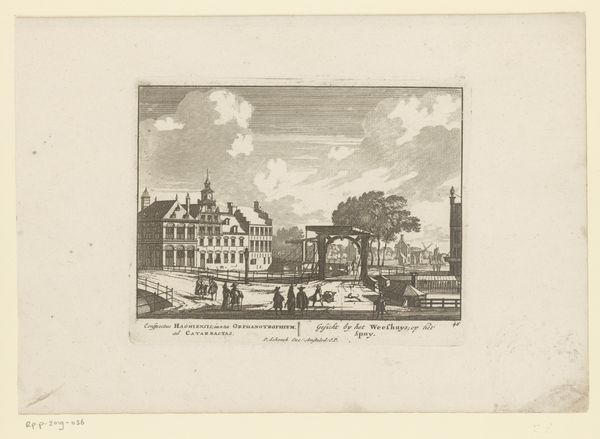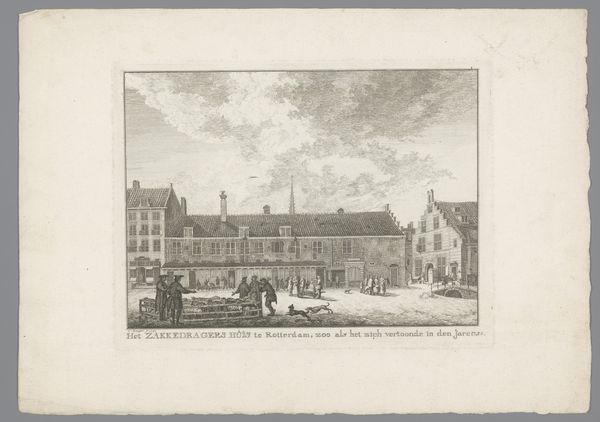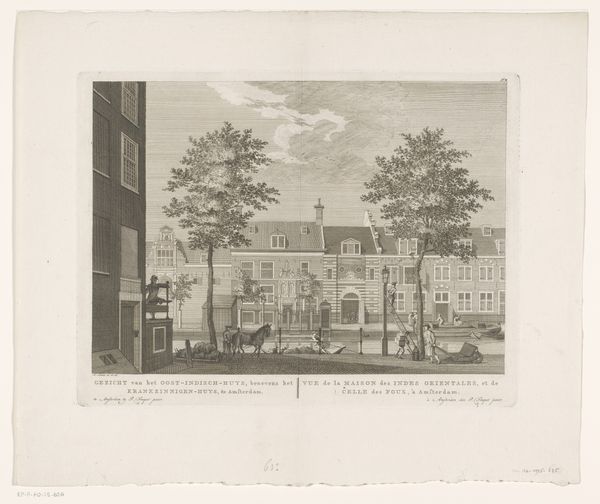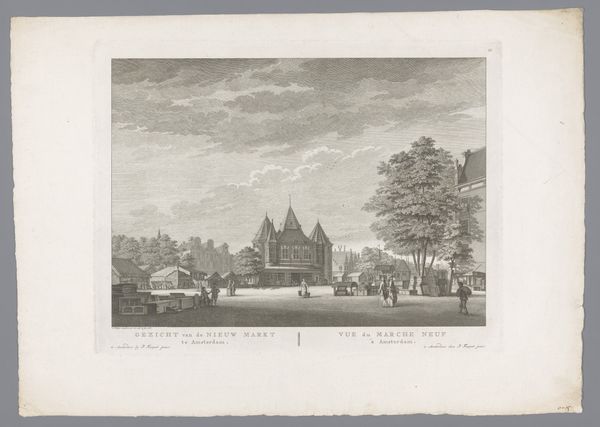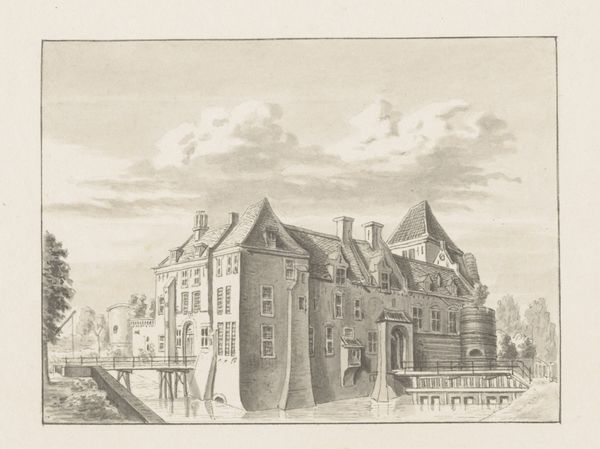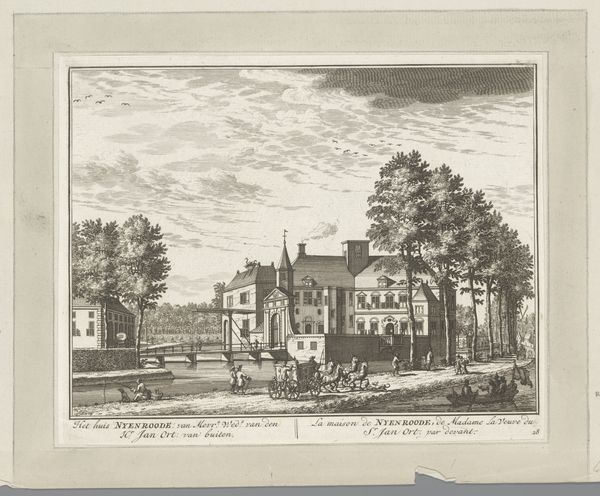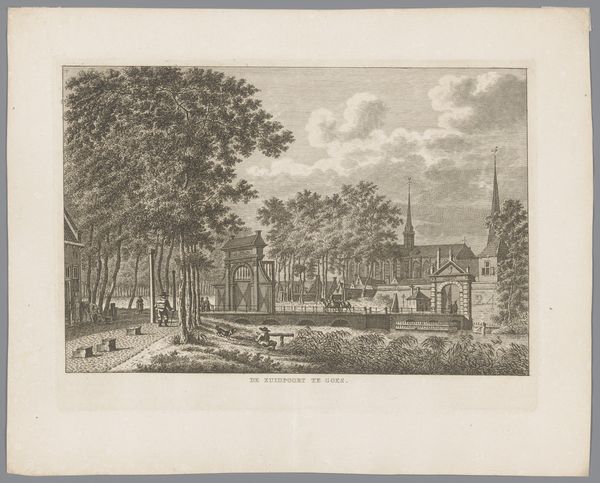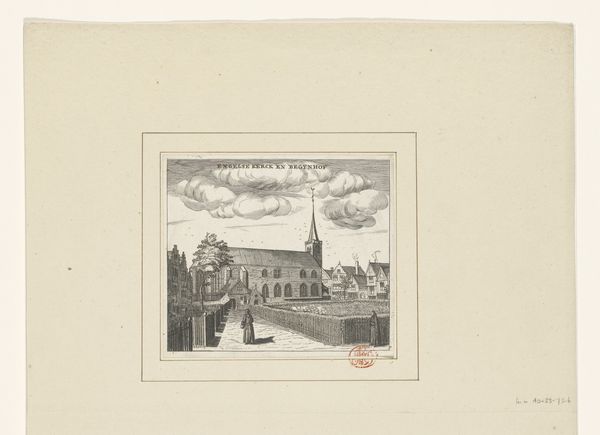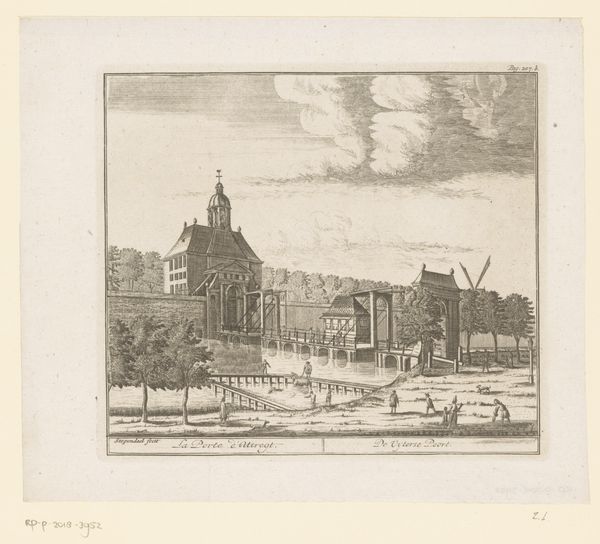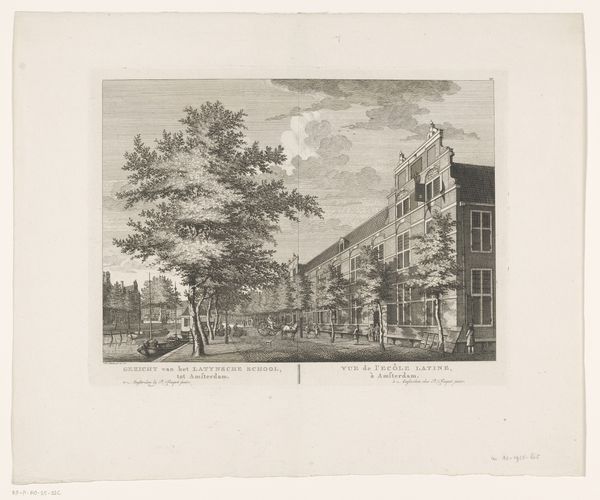
print, engraving
#
baroque
# print
#
cityscape
#
engraving
Dimensions: height 171 mm, width 195 mm
Copyright: Rijks Museum: Open Domain
Editor: Here we have Hendrik de Leth’s "Gezicht op het Dolhuis te Amsterdam," an engraving from the 18th century depicting a cityscape. It's interesting how such a sensitive subject as the madhouse is portrayed so matter-of-factly. How do we contextualize a place like this? Curator: That's a brilliant starting point. We have to remember that the "Dolhuis," or madhouse, wasn't just a building, it was a space that reflected broader societal anxieties about madness, social order, and the ‘other’. Consider, who was confined in such places and why? Was it primarily about mental illness as we understand it today, or were there other factors at play – social deviance, poverty, political dissent perhaps? Editor: So, it’s not simply a depiction of a building but a portrait of societal attitudes? Curator: Exactly. Look at the composition. The building is presented with a certain order, a façade of normalcy even. But doesn't this ordered exterior actually mask the chaos and suffering that likely existed within? How might this image serve to normalize the institution and, by extension, the practice of confining individuals deemed ‘mad’? And, moreover, how does the location on the water—with boats coming and going—intersect with Amsterdam's role in global trade and the traffic of bodies and ideas? Editor: I see what you mean. The calm scene hides the complex, maybe dark, realities of what went on inside. It makes me wonder about the artist's intention, too. Curator: Precisely! Whose perspective are we seeing? Understanding this artwork requires us to question the power structures at play, the gaze of the artist, and how institutions of control were visualized and, therefore, legitimized. It encourages us to reflect critically on how we represent and treat those who are marginalized or deemed ‘different’ even today. Editor: I had never thought about it this way. It’s more than just a cityscape; it's a social and political statement. Curator: Precisely. This engraving gives us a glimpse into the history of institutionalization and the construction of normality, which hopefully helps us be more reflective about these dynamics in the present.
Comments
No comments
Be the first to comment and join the conversation on the ultimate creative platform.
